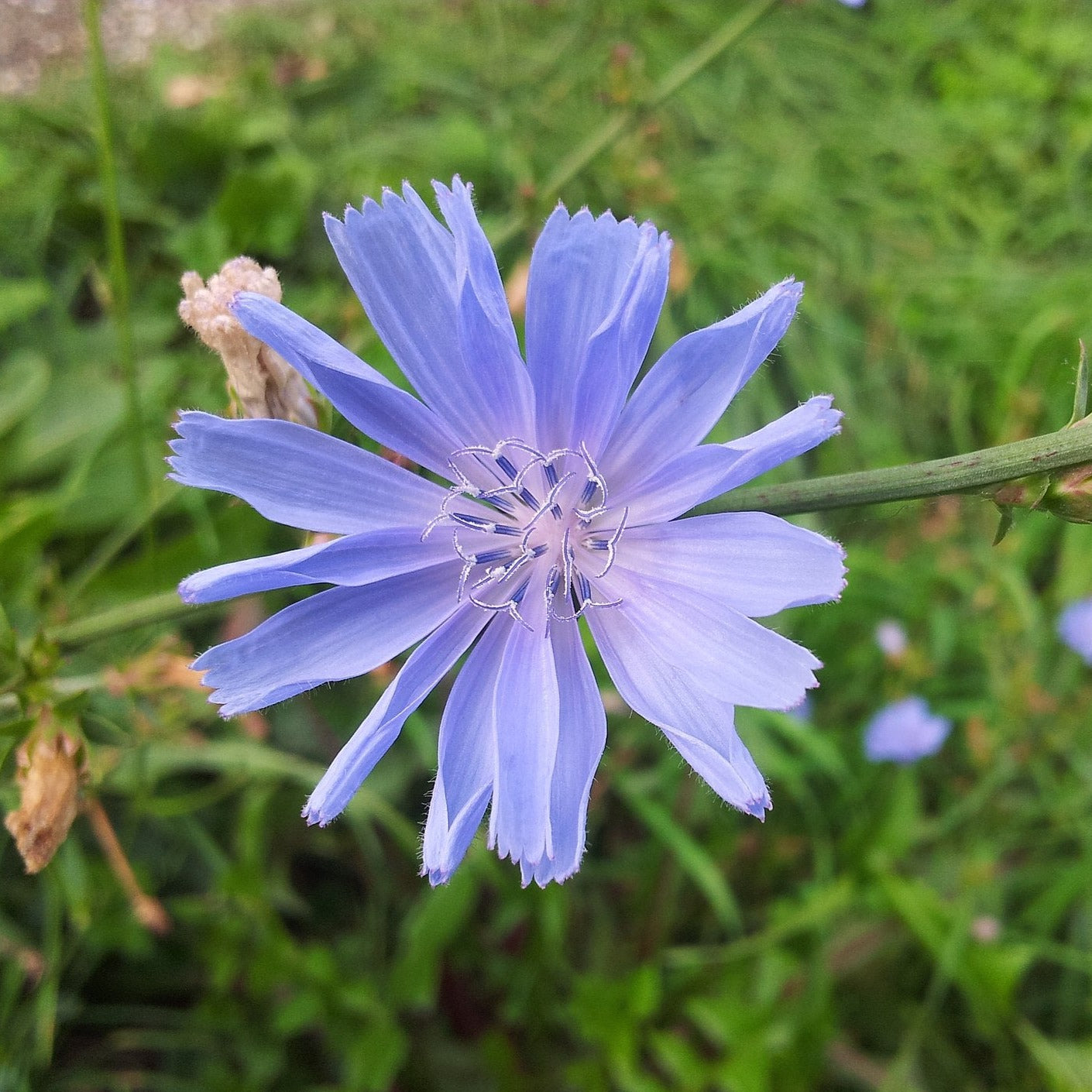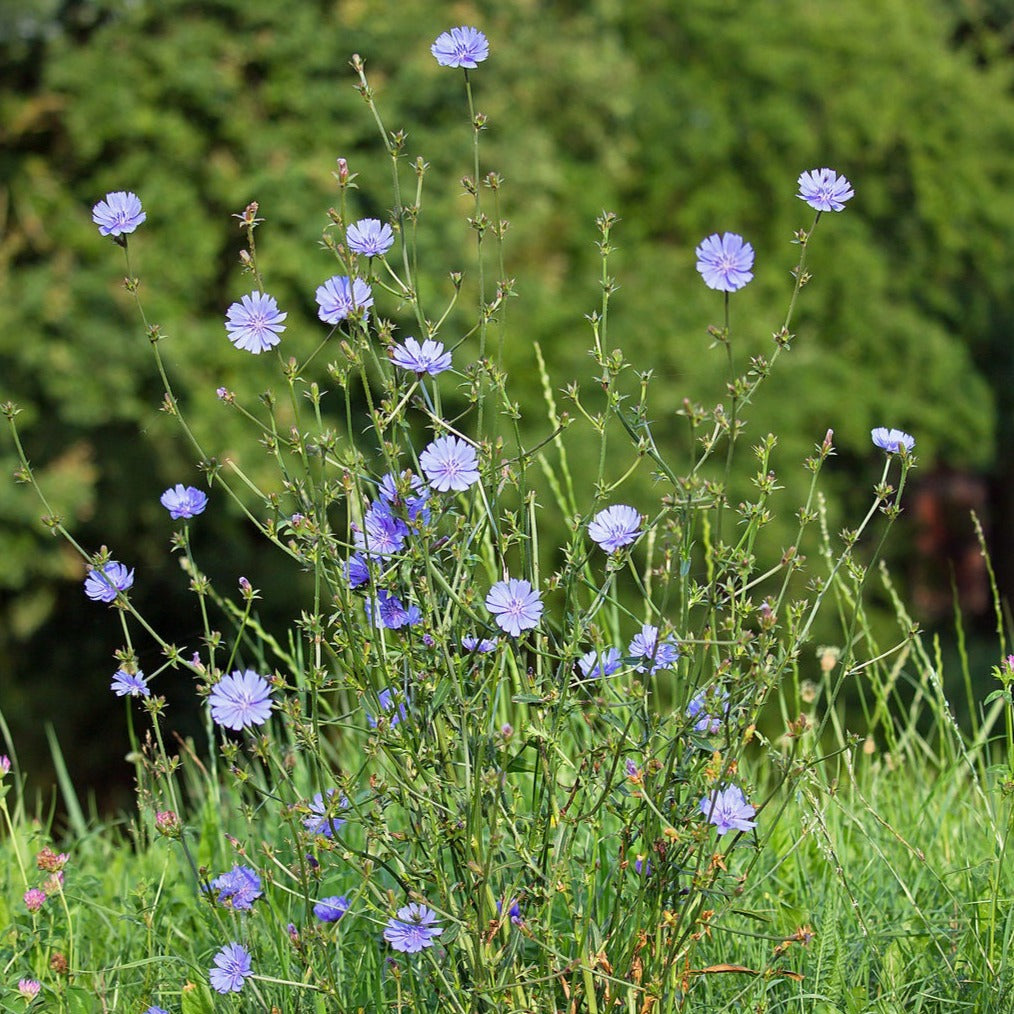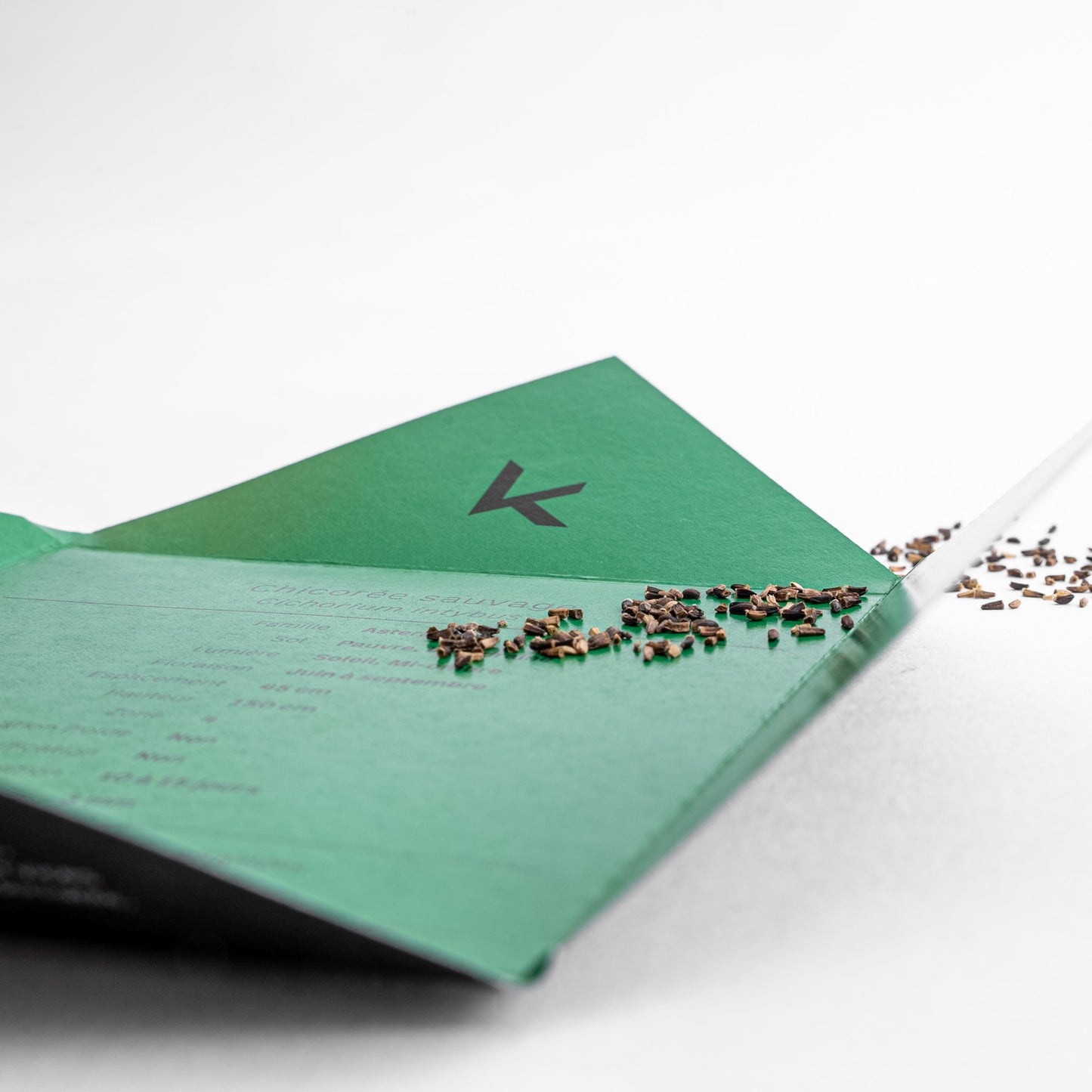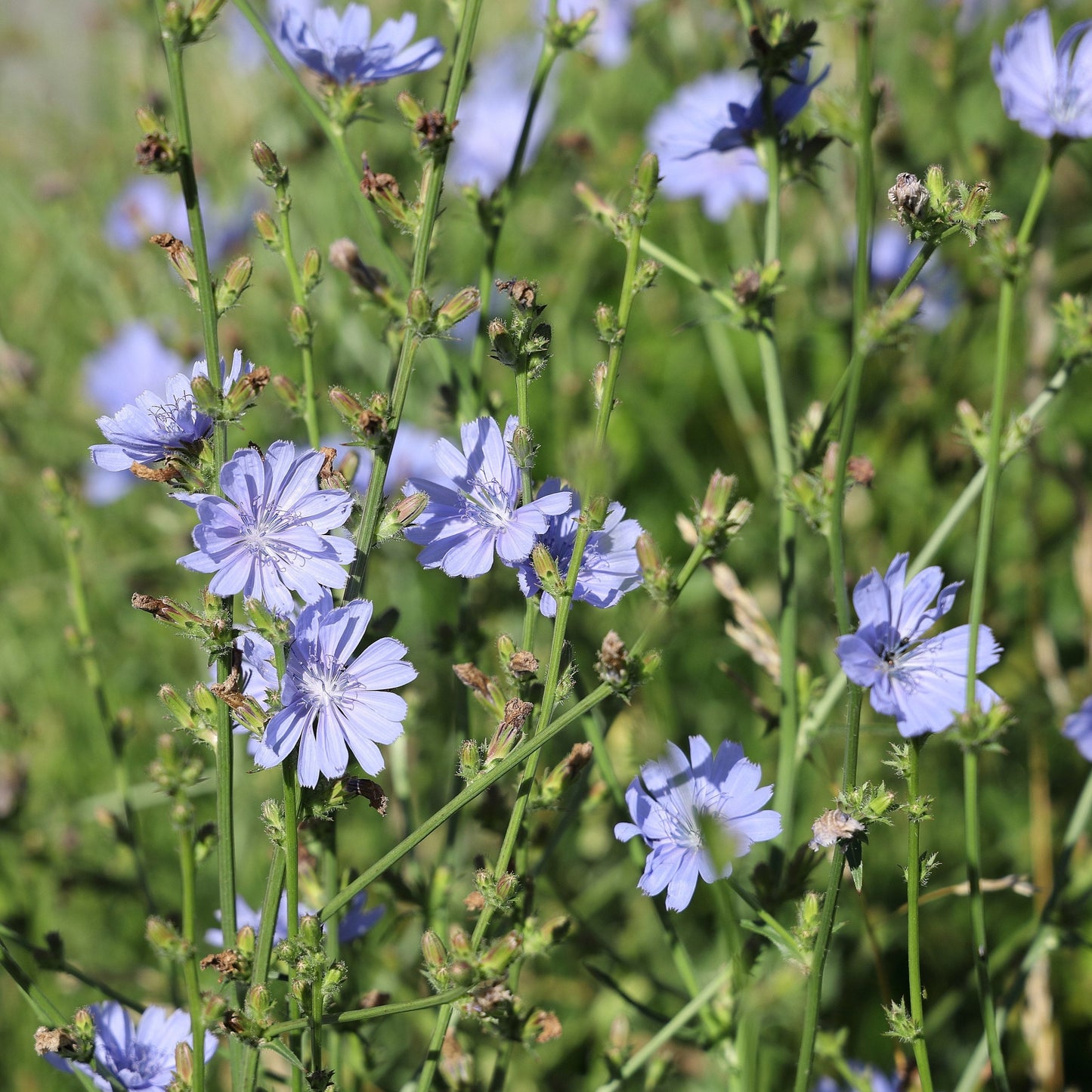For successful seedlings,
see the growing notes at the bottom of the page!
Wild chicory (Cichorium intybus) is a perennial plant easily recognized by its silver-blue flowers that adorn roadsides and meadows in the summer. With its rigid stems reaching up to 1.5 metres in height, it fits harmoniously into wildflower meadows or naturalistic gardens. Wild chicory prefers well-drained, sunny soils and can adapt to relatively poor soils, making it a robust and easy-to-grow plant. Its delicate, bright flowers, which bloom from June to September, attract various pollinators, adding liveliness and biodiversity to the spaces where it grows.
Medicinal and Culinary Uses
All parts of wild chicory are edible. In the spring, the young shoots can be added to salads for a crunchy, slightly bitter touch. Its flowers add a splash of colour to dishes and can be used as decorative garnish. In the fall, chicory roots are harvested to be eaten as a vegetable or roasted to make a coffee substitute. This latter use, especially popular in Europe, results in a slightly bitter, caffeine-free beverage appreciated for its distinctive flavour.
Chicory is rich in vitamins (particularly A, C, and K) and contains inulin, a prebiotic fibre that supports gut health and digestion. Its bitter compounds stimulate bile production, aiding digestion. In herbal medicine, it is also known for its purifying properties, helping cleanse the liver and eliminate toxins from the body. Chicory also has anti-inflammatory, diuretic, and tonic properties.
Ecological Roles
Wild chicory significantly contributes to local ecosystem biodiversity. Its nectar-rich flowers attract bees, butterflies, and other pollinators, thus promoting the pollination of surrounding plants. Moreover, its long and abundant bloom provides a continuous food source for these insects throughout the summer season. Its ability to thrive in poor soils makes it useful in ecological restoration projects, where it can help stabilize soils and prevent erosion. Wild chicory is an excellent choice for wildflower meadows or naturalistic gardens, bringing beauty, utility, and diversity to the landscape.
Akène cannot assume any responsibility for the use of plants for therapeutic purposes. Always seek advice from a professional before using a medicinal or edible plant.
Sowing and Growing
Technical Details
Seeds per packet: 100
Family: Asteraceae
Scientific name: Cichorium intybus
Life cycle: Perennial
Hardiness zone: 4
Soil type: Loamy to clayey
Soil moisture level: Dry to medium
Soil - additional attributes: Well-drained, poor
Light: Sun, part shade
Blooming: June to September
Spacing: 45 cm
Height: 150 cm
Deer resistance: Moderate
Stratification: No
Scarification: No
Germination time: 10 to 15 days
Sowing depth: 3 mm





